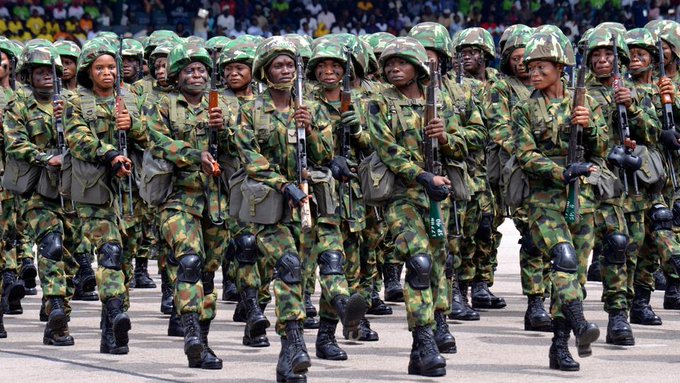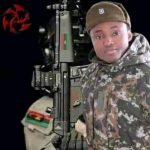By Group Captain Sadeeq Garba Shehu (rtd)
ECOWAS Standby Force (ESF) -some documents call it ECOBRIG or even ECOMOG – is part of the African Standby Force (ASF) (French: Force africaine en attente), an international, continental African, and multidisciplinary peacekeeping force with military, police and civilian contingents that acts under the direction of the African Union (AU). The ASF is to be deployed in times of crisis in Africa. Addis Ababa, Ethiopia, serves as the Force’s Headquarters. Douala, Cameroon, was selected in 2011 as the site of the AU’s Continental Logistics Base (LOGBASE).
Origins
One of the major problems which faced the OAU even before it later became AU is that of finding the best way to equip the organization to enable it effectively perform its defence and security role. But the idea of an African High Command antedated the creation of the Organization of African Unity (OAU) in 1963. In November 1960, President Kwame Nkrumah first muted the idea on his realization that the UN was not acting fast on the Congo crisis. It didn’t eventually materialize till the OAU became AU.
Before the founding of the African Union (AU) in 2001, its predecessor Organisation of African Unity (OAU) did not provide appropriate tools for a collective and comprehensive acting of African States in times of violent crisis, mostly due to the shared value of non-interference into the internal affairs of States. During the 1990s, a series of violent conflicts arose in Africa, most importantly the 1994 Genocide in Rwanda, seeing that Western countries were becoming more reluctant to put their own soldiers to fight and possibly die in African conflicts.
This reluctance came to a head when the American Blackhawk helicopter was shot down in Somalia and Americans at home saw via TV as the body of an American was being dragged on the ground, which generated a national uproar, with majority of Americans telling the USG it is not worth it, never again.
This forced the African States into a change in their common security collaboration. After the establishment of the AU in 2001, the non-interference clause of OAU was no longer valid. The Constitutive Act now gave the AU the right to intervene in a member State in grave circumstances, namely WAR CRIMES, GENOCIDE AND CRIMES AGAINST HUMANITY.
The same year, a new African Peace and Security Architecture (APSA) was presented, in order to build and strengthen African capacities for managing and resolving conflicts on the continent, comprising five pillars that included an African Standby Force (ASF). The key document signed in July 2002, explicitly recognized the roles of the Regional Economic Commissions RECs such as ECOWAS in promoting peace and security in Africa.
For that reason, the final concept for the ASF presented in the Maputo Report of July 2003 at the time provided for five regional Standby Brigade forces: A North Africa Regional Standby Brigade (NASBRIG), an East Africa Standby Brigade (EASBRIG); a Force Multinationale de l’Afrique Centrale (FOMAC); a Southern Africa Standby Brigade (SADCBRIG); and an ECOWAS Standby Brigade (ECOBRIG). The same document defined six ASF deployment Scenarios.
The organization at that time agreed on force levels of about 15,000 soldiers continentwide. It is important to highlight that the AU envisaged that the ASF or its regional components were to be deployed when any of the following scenarios unfolds in any African country:
Scenario 1: AU/Regional military advice to a political mission
Scenario 2: AU/Regional observer mission co-deployed with a UN mission
Scenario 3: Stand-alone AU/Regional observer mission
Scenario 4: AU/Regional Peacekeeping force for Chapter VI and preventive deployment missions (and peace-building)
Scenario 5: AU peacekeeping force for complex multi-dimensional peacekeeping missions, including those involving low-level spoilers
Scenario 6: AU intervention, e.g. in genocide situations where the international community does not act promptly.
PROBLEM 1 : THE AU ARRANGEMENT AND SCENARIOS DOES NOT INCLUDE INTERVENTION IN DEFENCE OF DEMOCRACY!!
The ASF Policy Framework Document from May 2003 aimed the development of the ASF in two phases:
Phase One (up to 30 June 2005): The AU’s envisaged the establishment a strategic level management capacity for the management of Scenarios 1-2 missions, while Regional Economic Communities (RECs)/Regions would complement the African Union (AU) by establishing regional standby forces up to a brigade size to achieve up to Scenario 4.
Phase Two (1 July 2005 to 30 June 2010): By the year 2010, the AU planned to have developed the capacity to manage complex peacekeeping operations, while the RECs/Regions will continue to develop the capacity to deploy a Mission Headquarters (HQs) for Scenario 4, involving AU/Regional peacekeeping forces.[8]
Three ASF Roadmaps (to 2008, to 2010, to 2015)were developed to guide the operationalization of ASF but in the final analysis all the roadmaps missed their deadlines and deliverables as most goals of Phase One were not met until 2010 and therefore AU revised the date for the achievement of the Full Operational Capability (FOC) to 2015. In December 2013, an assessment of the African Standby Force by an AU Panel of Experts concluded that the ASF is unlikely to achieve FOC in 2015 without major efforts made by all stakeholders.
Composition
Article 13 of the Protocol Relating to the Establishment of the Peace and Security Council (PSC) of the African Union (AU) foresaw an ASF to be composed of standby multidisciplinary contingents, with civilian and military components in their countries of origin and ready for rapid deployment at appropriate notice. For that purpose, the protocol urged the member states to take steps to establish standby contingents for participation in peace support missions decided on by the PSC or intervention authorized by the AU Assembly.
The strength and types of such contingents, their degree of readiness and general location should be determined in so-called Peace Support Standard Operating Procedures (SOPs), and shall be subject to periodic reviews depending on prevailing crisis and conflict situations.
Mandate
According to the PSC Protocol, signed in 2002, the ASF should enable the PSC to perform its responsibilities.
Article 13 of the protocol specifically directs the following functions to the ASF:
observation and monitoring missions;
other types of peace support missions;
intervention in a Member State in respect of grave circumstances or at the request of a Member State in order to restore peace and security, in accordance with Article 4(h) and (j) of the Constitutive Act;
preventive deployment in order to prevent
i. a dispute or a conflict from escalating,
ii. an ongoing violent conflict from spreading to neighboring areas or States, and
iii. the resurgence of violence after parties to a conflict have reached an agreement.;
peace-building, including post-conflict disarmament and demobilization;
humanitarian assistance to alleviate the suffering of civilian population in conflict areas and support efforts to address major natural disasters; and
any other functions as may be mandated by the Peace and Security Council or the Assembly.
According to the protocol, the ASF is suggested to cooperate with the United Nations and its Agencies, other relevant international organizations and regional organizations, as well as with national authorities and NGOs, where appropriate. The detailed tasks of the ASF and its modus operandi for each authorized mission are to be considered and approved by the Peace and Security Council upon recommendation of the commission.
It was envisaged that the ASF and/or its sub regional components would be able to deploy within a time period of between 14 days at best and worst in 90 days depending on the scenario.
The above is the plan , but what is the reality???
From July to December 2013, the AU conducted an assessment of the status of development of the ASF through an Independent Panel of Experts. One of the findings of the assessment was that it would be unlikely for the ASF to reach its FOC until December 2015 without major efforts by all stakeholders.
WHAT IS THE Current Status OF THE ASF AND THE 6 SUB REGIONAL STANDBY FORCES?
As at today 2023, none of the 6 regional brigades has achieved full operational readiness as envisaged, each is at various stages of operational readiness. But for our matter in Niger lets concentrate on the ECOBRIG of ECOWAS.
ECOWAS Standby Force (ESF) is supposed to be contributed by Ghana, Nigeria, Benin, Togo, Côte d’Ivoire, Guinea, Guinea Bissau, Liberia, Sierra Leone, Mali, Senegal, Niger, Burkina Faso, Gambia, and Cape Verde. It is a standby arrangement made up of military, police and civilian components.
A partial legal basis is given by Article 21 of the ECOWAS Protocol Relating to the Mechanism for Conflict Prevention, Management, Resolution, Peacekeeping and Security of December 1999. The ETF is structured into two infantry battalions (Western and Eastern) and a composite logistics battalion. The Western Battalion is led by Senegal while the Eastern Battalion is led by Nigeria.
It was intended that the ECOWAS Main Force was to number 3727, to build to complete a brigade of 6500 of all ranks to be ready by 2010. The initial Task Force is intended to be rapidly deployed and then the more robust, long-term Main Force is required afterwards. The headquarters (HQ) of both the ESF and the ESFTF are co-located in Abuja, Nigeria.
There is no formal memorandum of understanding between the ECOWAS Secretariat and the ECOWAS members states on Force generation. However, the memorandum of understanding has been drafted, and meanwhile (2010), there is a firm commitment of the different states leaders to provide personnel and facilities to facilitate any deployment of the Force.
Contrary to plans, as at 2020 the PLANELM of ESF has no civilian component, the Logistic Depot of the Force, was still to be built at Freetown, Sierra Leone even as land has been allocated in this regard by the government of Sierra Leone, and the US government is providing support for the establishment of the Logistics depot.
In the violent conflict in Ivory Coast in 2002, and in Mali in 2012 (I was there as Chief of Safety and Security ) ESF could not operate in a timely manner to prevent a further escalation of violence in the country as in reality there was no “standing force” in place.
The reality on the ground today is that there is no ECOWAS Standby Force ESF as envisaged under ASF on the ground. While its is possible that the remaining ECOWAS countries that are willing (eg Nigeria, Senegal and Cote d’Ivoire….the only ones that have clearly shown willingness so far) may be able to raise a force to send to Niger, it is unlikely that they will be able to do so within the next 14 days, or 30 days or even 90 …….as envisaged in AU and ECOWAS plans.
N.B
Here I only touched on operational issues regarding the potential deployment. In earlier post I touched on legal issues. Keen observers would note so far AU and UN have not come out to say they support a military intervention….e get why. Both AU and UN are reluctant to ok a military deployment . AU ASF arrangements and UN Charter actually made no provisions for military armed intervention solely on the basis of “defence of democracy.”
Group Captain Sadeeq Garba Shehu (rtd) is an international Defence and Security Consultant





